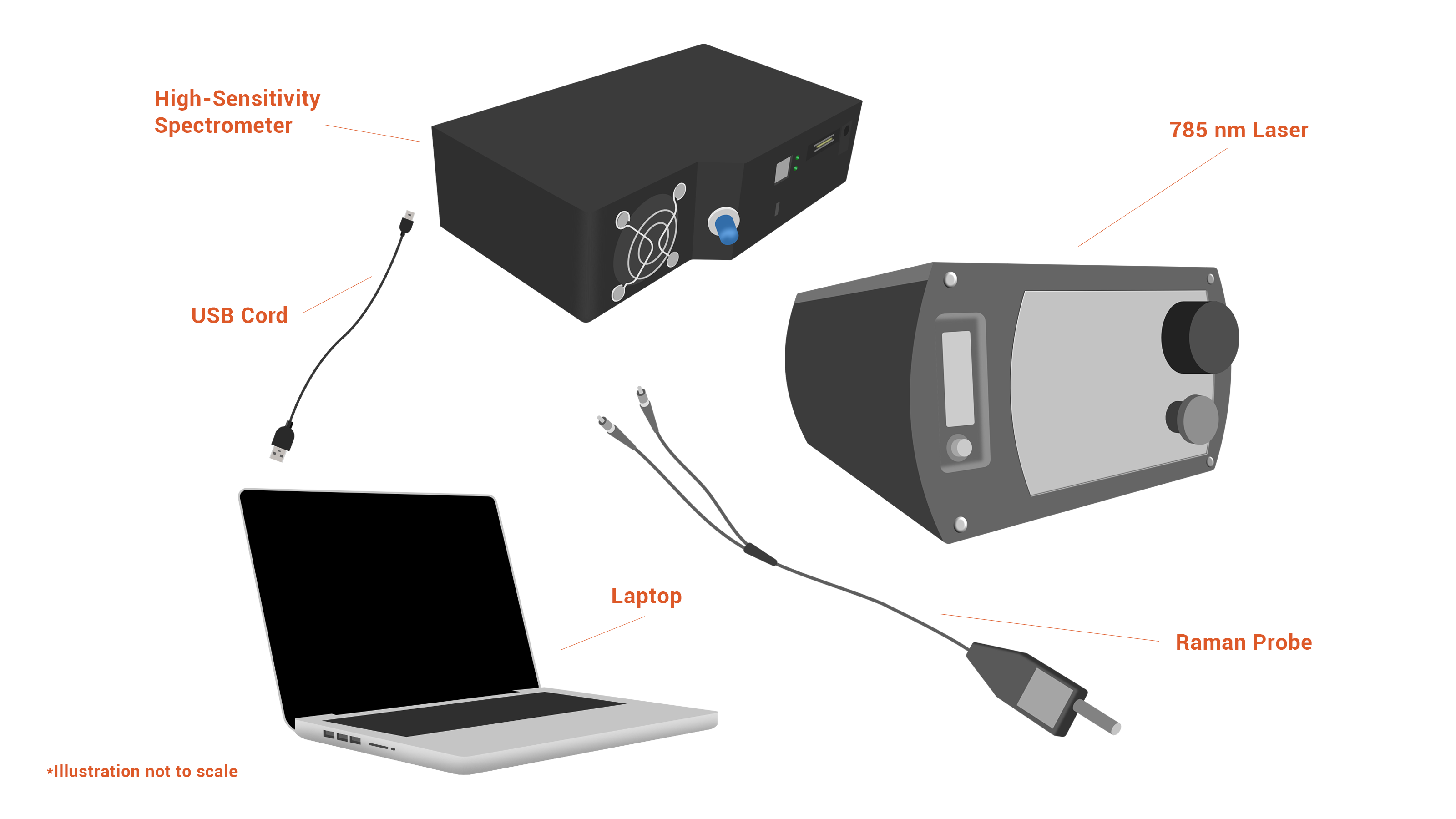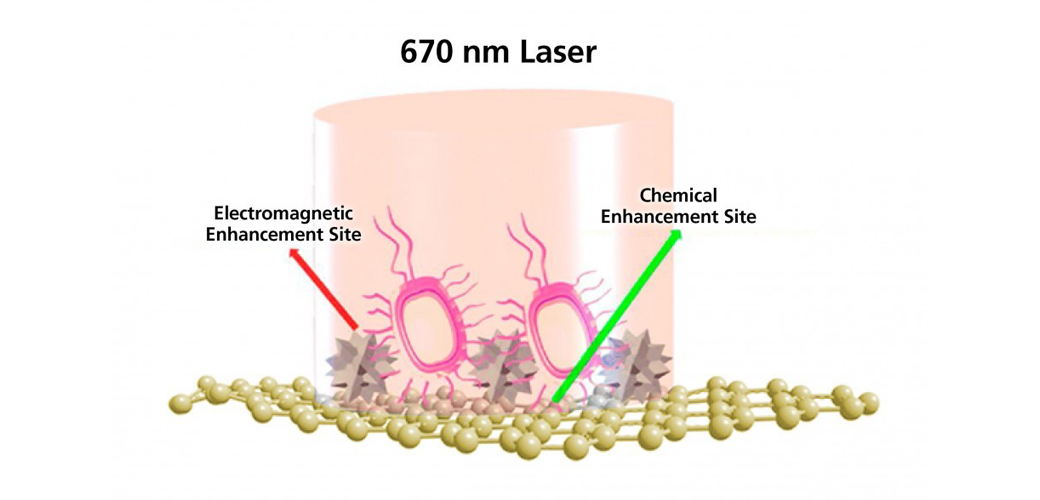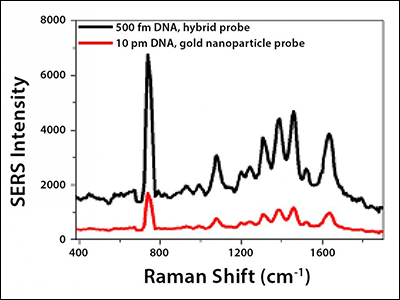Subscribe to Our Blog
Receive updates from our team as we share application notes, customer spotlights, educational tools, spectroscopy how-to’s, and more.

Researchers at Jackson State University successfully used SERS to detect the human immunodeficiency virus (HIV). To begin the study, they first tested gold nanoparticles of varying shapes to determine which would show the greatest electromagnetic enhancement.
Spherical, cage, and popcorn-shaped gold nanoparticles were tested using Rhodamine 6G dye, a well-known Raman-active compound. The system used to make the measurements comprised an Ocean Optics QE series spectrometer, a 670 nm excitation laser and InPhotonics fiber optic Raman probe (Figure 1). The popcorn-shaped nanoparticles resulted in >50x more electromagnetic enhancement of the Raman signal than other conformations, most likely due to the sharp tips on the nanoparticle creating a “lightning rod effect” in addition to the known surface plasmon excitations.

Figure 1: Modular fiber optic Raman spectroscopy system for SERS detection.
Once selected, the popcorn-shaped gold nanoparticles were conjugated to graphene oxide fragments less than 50 nm in diameter to create a hybrid SERS probe (Figure 2). These hybrid probes were studied for their ability to detect the virus in low concentrations.

Figure 2: In a hybrid SERS probe for ultrasensitive biosensing, popcorn-shaped gold nanoparticles (spiked balls) result in electromagnetic enhancement of the SERS signal, while conjugated graphene oxide (grey mesh) provides chemical enhancement.
Previous work on SERS for detection of HIV has typically used labels or tags, which must attach to specific genetic sequences. This work, in contrast, used a segment of the HIV gag-gene as the probe DNA. Each peak in the observed Raman spectra could be assigned to the literature-reported data, confirming that the Raman spectra observed were attributable to the presence of the virus in the sample (Figure 3).

Figure 3: SERS-based detection of a segment of the HIV-1 gag-gene using popcorn-shaped gold nanoparticles conjugated with graphene oxide (black) and with the gold nanoparticle alone (red).
To assess the chemical enhancement effect of the graphene oxide, SERS spectra were acquired for both the hybrid probe and popcorn-shaped gold nanoparticles alone. Taking into account differences in concentration of the samples, the hybrid probe was found to be ~100x more sensitive than the gold nanoparticle probe alone, showing the power of employing both chemical and electromagnetic enhancement simultaneously in the same SERS probe.
By combining the chemical and electromagnetic enhancement effects available from graphene oxide and gold nanoparticles, respectively, a highly sensitive SERS probe can be created for the detection of viruses like HIV. Use of a portable modular spectroscopy system for detection further increases the viability of this method for practical clinical diagnostics.
Options available
SERS Substrates
Prices From $84.00
QE Pro Preconfigured Raman Spectrometers

Receive updates from our team as we share application notes, customer spotlights, educational tools, spectroscopy how-to’s, and more.